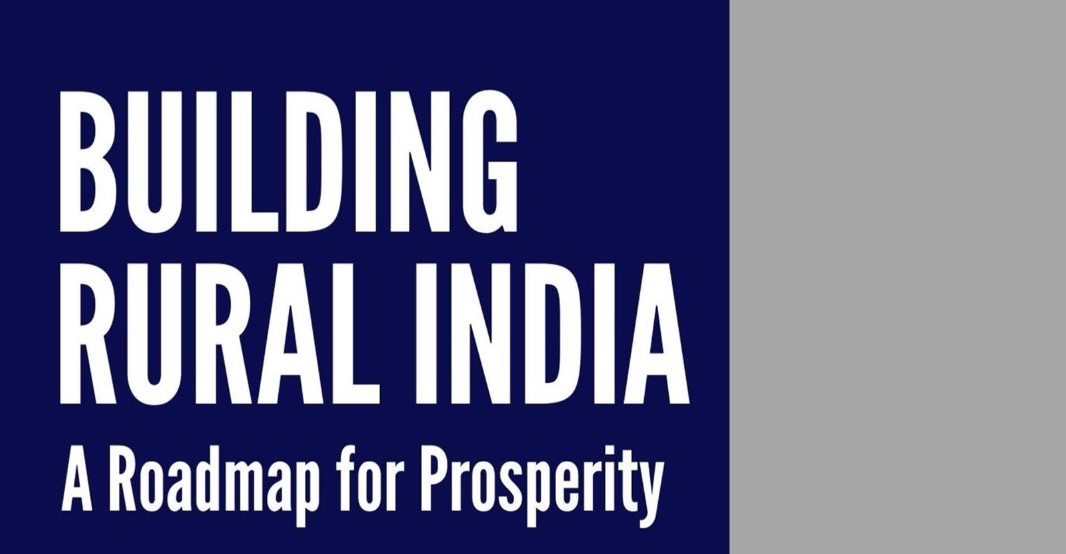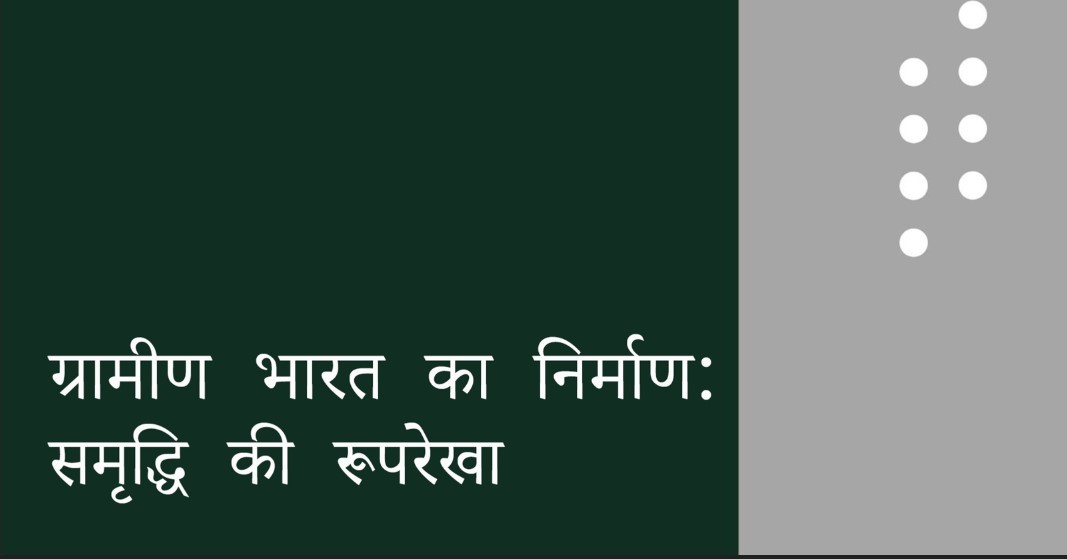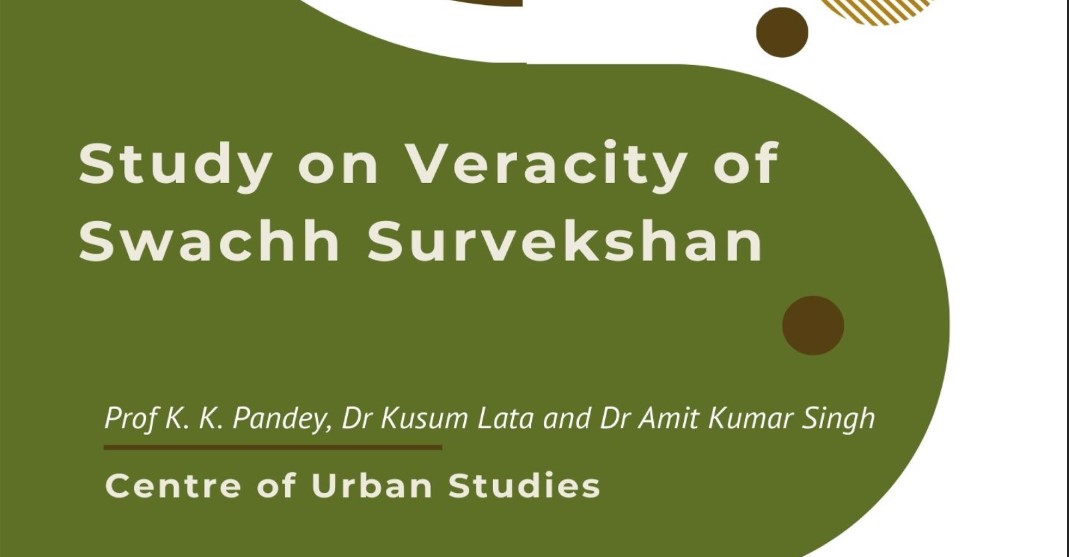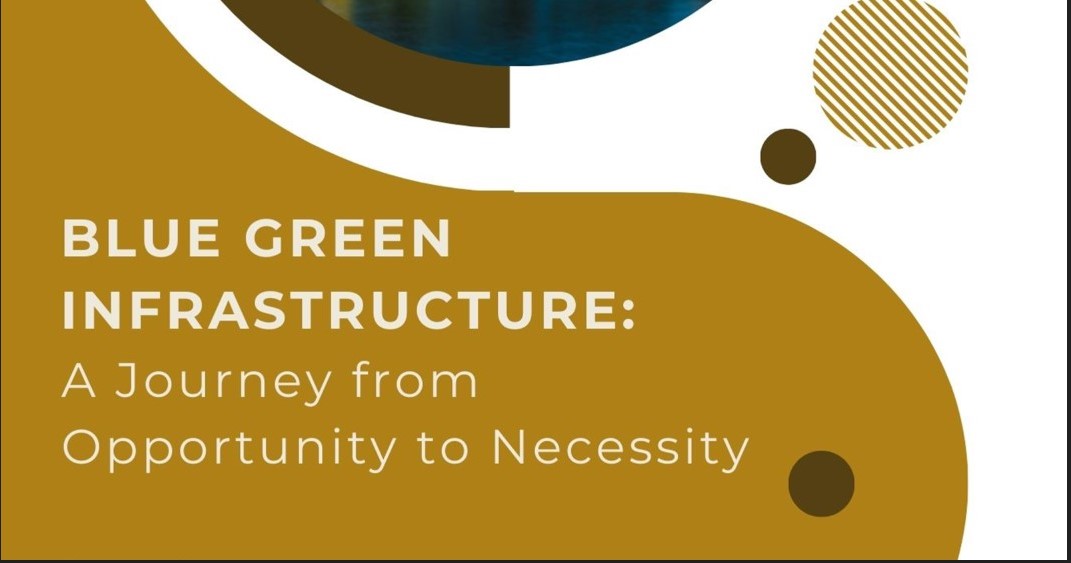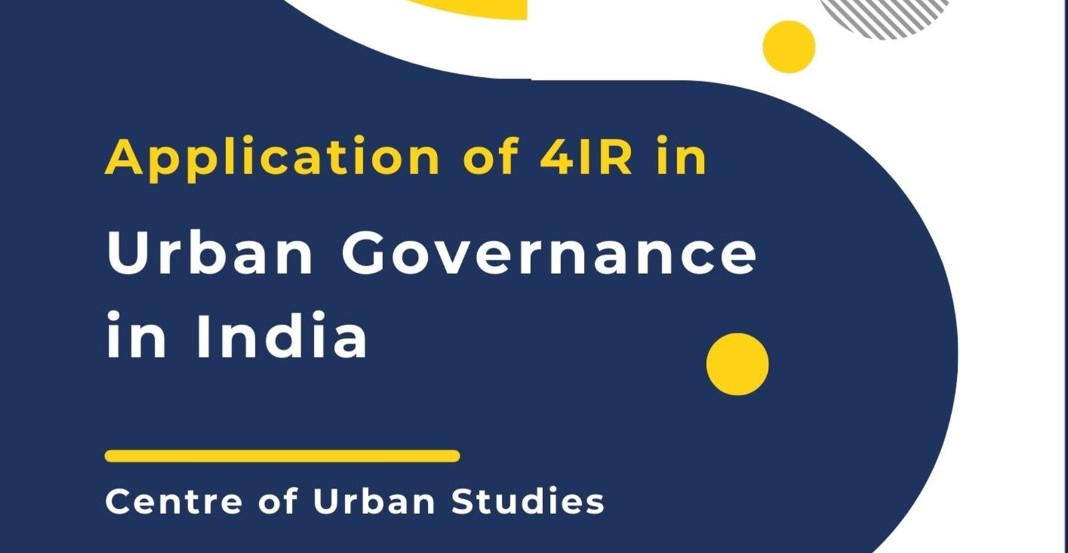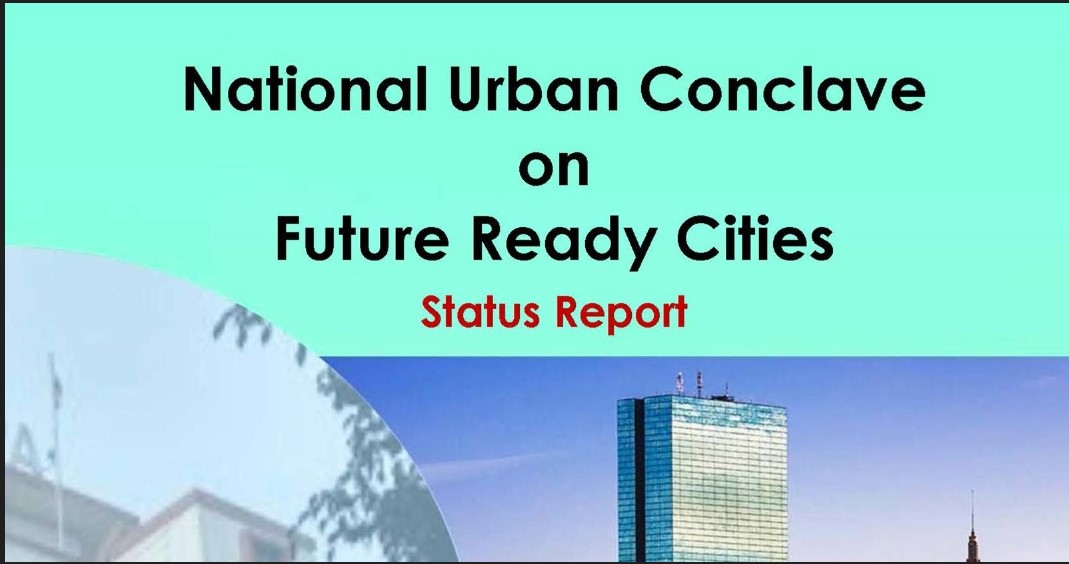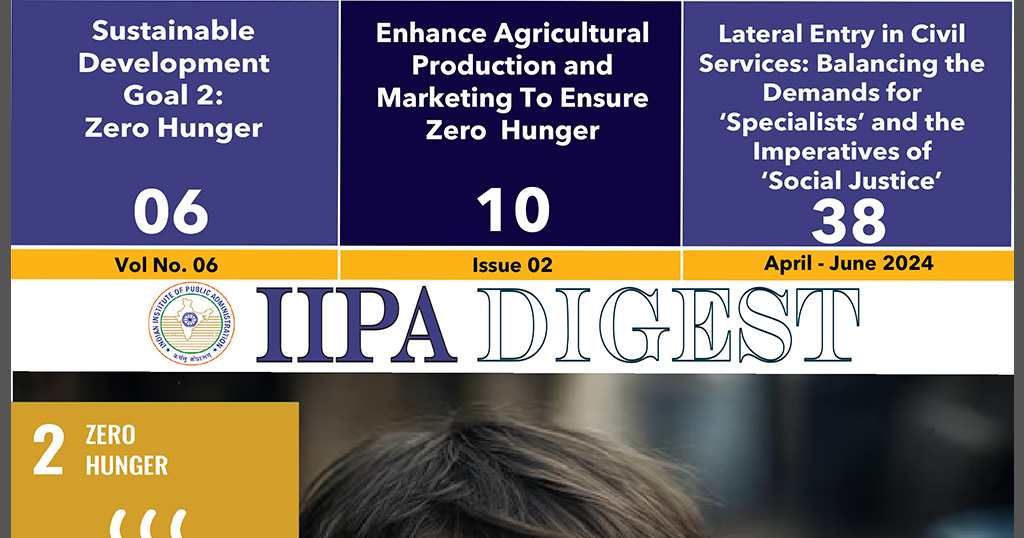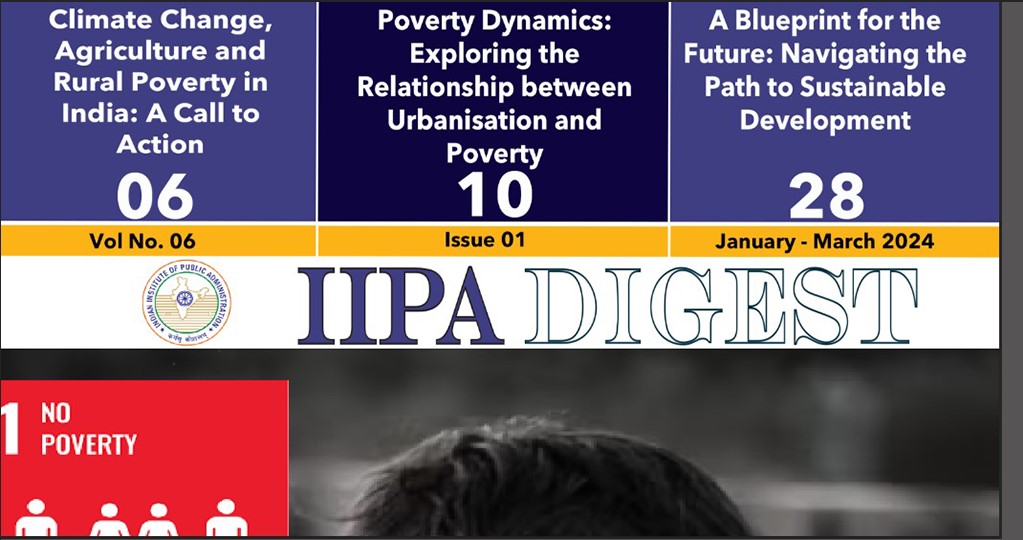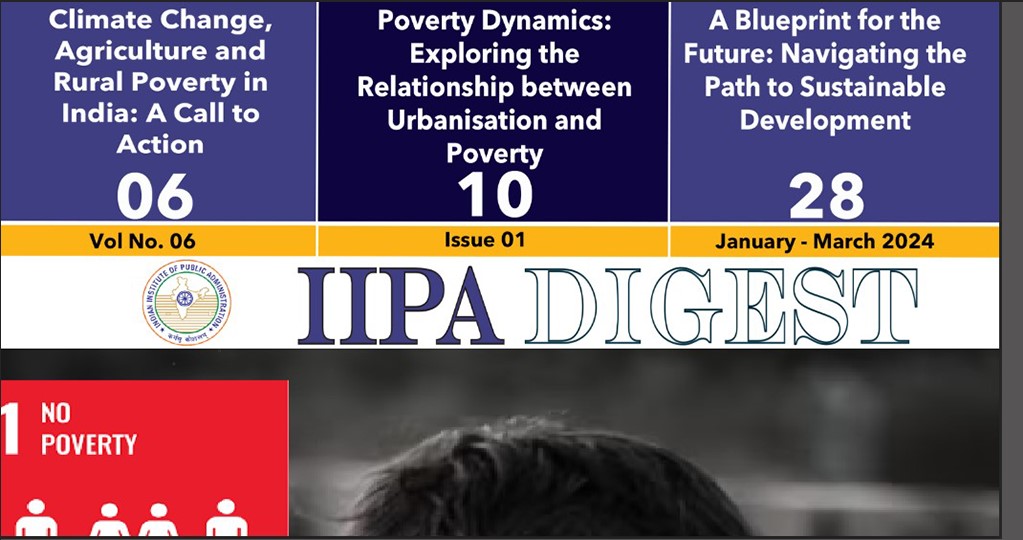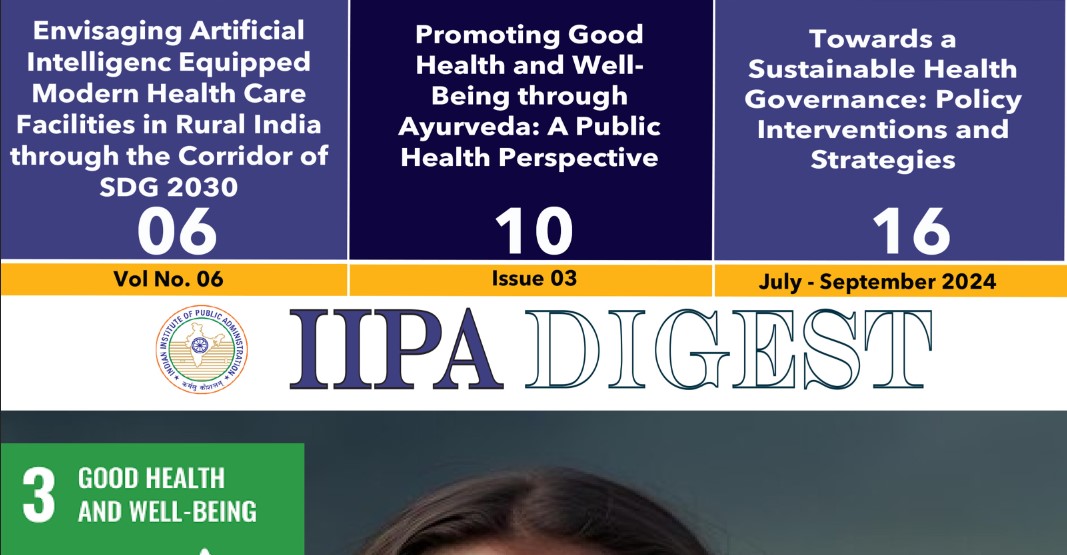Digital Panchayat in India: Genesis, Growth and Impact (2004–Present)
Abstract
This report traces the journey of Panchayat computerisation in India popularly known as e‑Panchayat from the Round Table Conferences of 2004 through the design and rollout of the Panchayat Enterprise Suite (PES), to its consolidation into e‑Gram Swaraj (2020 onward). It synthesises institutional context, technical architecture, state-level experiments, implementation challenges, solutions recommended in official and expert reports, and measurable impacts. The ultimate goal is to present efforts underwent to position end-to-end IT enablement of Panchayats which are one hand able to plan & monitore effectively; deliver services and on the other hand perform other regulatory functions of Panchayats. This paper attempts to share evolutionary stages of ePRI/ePanchayat/Digital Panchayat programmes in India.
Key words: e- Panchayat,Panchayat enterprise architecture,National roadmap and state pilots
Introduction
The 73rd Constitutional Amendment (1992) created the constitutional space for Panchayati Raj Institutions (PRIs) as the third ti.e.,r of governance. After a decade of institutional consolidation, policymakers recognised the need to equip PRIs with digital tools to improve planning, financial management, transparency and citizen services.
When the Ministry of Panchayati Raj (MoPR) was created in May 2004 (effectively operational from 2005 onwards), the Panchayati Raj Institutions (PRIs) were already more than a decade into their constitutional existence (post-73rd Constitutional Amendment, 1992). But they were still struggling with systemic and structural bottlenecks. The main challenges PRIs faced during initial stages post ministry formation.
Devolution Deficit (3Fs – Funds, Functions, Functionari.e.,s)
• Although the 11th Schedule listed 29 subjects, most States had not transferred them fully.
• PRIs often had little say in planning, budgeting, or implementation almost without any regulatory powers.
• Lack of dedicated staff and financial autonomy made them dependent on line departments.
Weak Capacity and Training
• Large numbers of elected representatives (over 2.3 million by then) required continuous capacity-building.
• Training modules were patchy, ad hoc, and uneven across States.
• Many newly elected women and SC/ST representatives lacked exposure to governance processes.
Financial Dependence and Irregular Funds Flow
• Own-source revenues were negligible in most PRIs.
• They depended mainly on ti.e.,d grants from the State and Central governments.
• Funds often reached late or were earmarked, leaving little room for local prioriti.e.,s.
Parallel Schemes and Weak Convergence
• Centrally Sponsored Schemes (CSS) and line department programmes bypassed PRIs.
• Sectoral silos led to duplication and fragmentation.
• PRIs were sidelined to mere “implementing agenci.e.,s” rather than institutions of self-government.
Social Inclusion and Participation Deficit
• Though seats were reserved for women, SCs, and STs, effective participation was limited due to social hi.e.,rarchi.e.,s.
• Gram Sabhas were often irregular, poorly attended, or dominated by elites.
• Transparency and accountability mechanisms were weak (e.g., limited use of social audit in 2005).
In short, when the ministry was formed, the major challenge was to make PRIs effective institutions of self-government with rather than symbolic bodi.e.,s.
In order to address some of these key issues, During 2004, the Ministry of Panchayati Raj (MoPR) convened a seri.e.,s of seven Round Table Conferences (July–December 2004) which produced a Compendium of nearly 150 Action Points a national roadmap across 18 thematic dimensions (Functions, Finances, Functionari.e.,s and others) that explicitly included IT and capacity building as a core theme (see Round Tables, 2004 – Compendium). In this paper, an attempt is made to focus on eGovernance issues & situations faced by PRIs.
Genesis (2004–2008): national roadmap, pilots, and expert guidance
Round Tables (2004) and the 150 Action Points
The seven Round Tables of 2004 were a high‑level consultative process involving State Ministers, senior civil servants and domain experts. The Jaipur Round Table (VII) emphasised IT as a “catalyst for governance”: decision‑support, transparency through social audit, e‑procurement, convergent service delivery and Panchayat ownership of data. ICT enablement of Panchayats was the key fous so they could function as modern institutions of self-government and National informatics Centre(NIC) was designated a primary IT/software partner in this endeavour.
Why this mattered: the Round Tables converted fragmented voices of states into a shared national agenda. The Compendium acted as both mandate and checklist for subsequent MoPR actions.
State pilots: learning before national scale
Many states such as Gujarat, Goa, Kerala, Tripura, MP, Karnataka Odissa etc have also taken initiative on Panchayat Computerisation in terms of connectivity, accounting software, reporting software, Asset Register and training availability. Lots of learning were available from these states. Most of them were of experimental in nature focusing on data processing needs primarily without any scope for transparency or service delivery. The online interoperability with other application was also an issue due to lack of meta data or data standardization.
Therefore, while Panchayat domain eco system was increasingly maturing for better for better digital artefacts consumption capacity, a national strategy explicitly sought to a) provide highly configurable & interoperable common core framework platform as an option and b ) also preserve effective state innovations while providing a common data framework and standards.
ePanchayat Mission Mode Project(MMP)
The ePanchayat Mission Mode Project (MMP) was identifi.e.,d as a one of the 31 Mission Mode projects(MMPs) under National e-Governance Plan (NeGP) in May 2006.. The project received in-principle approval from the Planning Commission in August 2007. The Ministry of Panchayati Raj (MoPR) initiated action to prepare the project's Detailed Project Report (DPR) in 2008. (https://www.pib.gov.in/newsite/PrintRelease.aspx?relid=82707#:~:text=The%20Project%20received%20in%20principle,without%20any%20disbursement%20to%20States.)
Early Software Initiatives
NIC proactively, in consultation with MoPR and states had already operationalized early software versions of PanchayatDIrectory, PlanPlus module to facilitate financial & physical convergence as envisaged part of BRGF (backward Region Grant fund) and National Panchayat Portal offering configurable websites of each Panchayats where in content is was meant to be managed by Panchayats themselves without any need of software development.
Information Need Assessment
In order to further the agenda of 7th round table conference, A nationwide study “Information & Service Need Assessment(ISNA)” was carri.e.,d out by MoPR in collaboration with States and NIC with objective to Identify information requirements, workflow gaps, and potential ICT applications of panchayat at three levels i.e., Village, Intermediate and district with focus
• What type of data Panchayats need (finance, works, citizen services, planning).
• How computerisation could support decision-making and service delivery.
• Training requirements for elected representatives and staff.
The aim of the study was to
• Assess the Information and Services Needs of and from the PRIs in the State
• Prepare the Information and Service Need Assessment (ISNA) Report for each State
• Prepare a report on the Business Process Re-engineering (BPR) of the identifi.e.,d functions and services.
• Prepare a Detailed Project Report (DPR) on implementing the e-PRI MMP in each State
• Prepare the National Level ISNA, BPR and DPR reports based on the findings from the States
As part of the work order (to NICSI vide letter No.19011/6/2009-P&J dated 25th March, 2009), MoPR had identifi.e.,d 27 States and 38 districts in the identifi.e.,d States in which the study was meant to be conducted. Minimum one panchayat, at each layer, was identifi.e.,d in each state/UTs as a part of study and bigger states more than one panchayat were chosen as a part of study.
Finally, a) the work flow processes of 135 Panchayats across 45 districts in 34 States/UTs were studi.e.,d to assess role & responsibiliti.e.,s of Panchayats, b) Need of 11 Central line ministri.e.,s, 11 state line departments including state PR were examined and c) 23 central schemes having grass-root and/or GP interface were also examined. The ISNA, BPR and DPR reports were submitted to the Ministry during June, 2010.
Expert Group and the PES concept (2007–2008)
The Ministry of Panchayati Raj (MoPR) has constituted, in June 2007, an expert group on e-Panchayat Mission Mode Project (MMP) was the Expert Group on IT Programmes of the Ministry of Panchayati Raj, tasked with assessing the IT programmes of the Ministry and providing a roadmap & core & common software applications for end-to-end enablement of e-Governance in Panchayati Raj.
Based on analysis of ISNA reports, the 11 Core & common application areas were identifi.e.,d and NIC was entrusted with the responsibility to make these applications generic; based on open source tools & technologi.e.,s so that each state is able to configure them as per their needs and work-flows in respective local language.
The detailed report of the Expert Group could be accessed on (https://cag.gov.in/uploads/media/REPORT-OF-THE-EXPERT-GROUP-ON-IT-PROGRAMMES-OF-THE-MINISTRY-OF-PANCHAYATI-RAJ-GOV-OF-INDIA-20210626145426.pdf )
A Roadmap for Panchayati Raj: An All India Perspective during April, 2011
A annual Report released by MoPR on 24th April, 2011 also shares the vision & expectations on ePanchayat in Chapter 8, page 42
(https://cdnbbsr.s3waas.gov.in/s316026d60ff9b54410b3435b403afd226/uploads/2023/02/2023022177-1.pdf). The report enlisted the following action points to be undertaken
• Provide ICT infrastructure and manpower to all Gram Panchayats (GPs). (GoI and States)
• Have a clear strategy and action plan for roll-out of e-Panchayat Project for which ISNA, BPR and DPR have been prepared for each State/UT. (States)
• Develop and deploy all 12 Core Common Applications within a year and also the identifi ed State specific Applications. (GoI and States)
• Leverage CSCs as front-ends for citizen services as an option.
• Connect all Gram Panchayats (GPs) with broadband. (GoI)
Metadata and Data Standards(MDDS) for PRI Domain
A Committee on the same was constituted by Department of IT and chaired by MoPR to define the MDDS for panchayati Raj domain. The document was prepared in consultation with states and notification was done Since Applications under PES of generic nature accommodating the state specificiti.e.,s in terms of languages, governance rules and regulations etc. The MDDS for Panchaats are available on MeitY Standards
website(https://egovstandards.gov.in/sites/default/files/2021-07/MDDS_Panchayatirajv1.0.pdf )
These standards provided a) a needed standardization for seamless interoperability among all eGovernance applications related to Panchyati Raj domain b) Fully compliant with all national e-Governance Standards published by GOI, like Data and Metadata Standards for Person Identification and Land Region Codification, UID, etc
Panchayat Enterprise Architecture Framework (PEAF)
The first time in public sector, an enterprise architecture approach formally was adapted to analyse the domains and prepare architecture of 11 common core applications, under PES, and a document was prepared PEAF document.
Following are the areas of operations of Panchayats, which formed a key input to the business architecture.
The PEAF was prepared to provide a structured and standardized approach to e-governance for Panchayati Raj Institutions (PRIs). The goal was to move beyond the development of isolated software and create an integrated suite of applications that could be scaled up across the country. The framework's core purpose was to ensure that all e-governance initiatives for Panchayats were aligned with a common vision and set of standards.
(Panchayat Enterprise Architecture Framework Business Function Map)
The PEAF provided the architectural blueprint for the entire suite, ensuring that the various applications were not just a collection of separate tools, but a cohesive and interoperable system. It laid down the technical and functional standards that each application had to adhere to, which was crucial for a project of this scale involving more than 2.5 lakh Panchayats across the country.
Panchayat Enterprise Architecture Framework was a crucial, guiding document prepared under the e-Panchayat MMP. Its genesis was a strategic decision by the MoPR, with the technical backing of NIC, to ensure that the massive undertaking of digitizing Panchayats was done in an interoperable and integrated manner, based on the findings of a detailed study by a dedicated expert group.
(Panchayat Enterprise Architecture Framework Application Architecture View)
Subsequently, this work was also referenced in IndEA Adoption Guide 1.0 (https://egovstandards.gov.in/sites/default/files/2021-10/IndEA%20Adoption%20Guide%201.0.pdf) document mentions the Panchayat Enterprise Architecture Framework (PEAF) [2011] as a precursor to the broader India Enterprise Architecture (IndEA) framework.
Panchayat Enterprise Suite (PES) - Features, Modules & scope
PES: purpose and design principles
PES was designed around three key principles: completeness (cover the end‑to‑end Panchayat lifecycle), modularity (state‑specific modules may be retained or replaced), and interoperability (common LGD codes, data exchange standards). PES’s modules were meant to be thin cli.e.,nts with centralised data services hosted by NIC. The other features were:
• Localisation Support: The use of UNICODE was a core technical feature, which enabled the applications to be made available in local languages, making them more accessible and user-fri.e.,ndly for functionari.e.,s and citizens across different states
• Configurable (Adaption of Low Code No Code Principles)
• Open-Source Technologi.e.,s: The suite was meant to be built using open-source tools and technologi.e.,s. This was a deliberate choice to ensure the platform was available free of cost to all states and to promote wider adoption without licensing fees
• Browser Independence
• Web-based and 24/7 Availability: The applications were designed as web-based platforms, accessible to authorized users 24/7. This removed the dependency on specific local machines and allowed for remote access and management.
• Single Sign-On (SSO): A key technical feature was the single sign-on facility, which provided a common user ID and password for accessing all the applications within the suite. This simplifi.e.,d the user experi.e.,nce and improved security.
• Scalability and Extensibility:
• GIS Integration
The 11 core PES modules
The details of PES application modules are given below
1. Local Government Directory (LGD)-Unique identifi.e.,rs of PRIs ti.e.,d to administrative hi.e.,rarchi.e.,s.
2. AreaProfile-A module to manage socio economic database of Panchayat
3. PlanPlus-Perspective, annual and action planning at GP, Block and District levels; linked to GPDPs.
4. PRIASoft-Financial Management modules including Ledgers, vouchers, receipts & expenditure accounting; intended to bring uniformity to GP accounting.
5. ActionSoft-Activity planning and M&E module for tracking physical/financial progress under schemes.
6. National Asset Directory (NAD)-Centralised asset registry to avoid duplication and enable life‑cycle management.
7. ServicePlus-To facilitate rapid roll out of online services
8. Gri.e.,vance Redressal Management-To facilitate Griavcen life cycle management
9. Audit Management-To facilitate audit processes in panchayats by internal audit teams, Local Fund Audits and CAG and social audits
10. Meeting(Gram Panchayats/Sabha) Management-Records statutory meetings, social audits, attendance and decisions.
11. Training Management-Organises training calendars, materials and feedback loops for capacity building.
12. National Panchayat Portal (NPP)-Public information gateway exposing plans, assets and meeting minutes.
Note-Out of these 12 modules, Subsequently Grievance Redressal module, nature being work-flow & service, was envisaged to be configured using ServicePlus module wherever required. Hence, PESuite proceeded further with remaining 11 modules.
PES Interlinkages — An indicative high level diagram
Implementation realiti.e.,s (2009–2016): uptake, bottlenecks and institutional responses
Launch & Operationalisation
It was an ongoing project under the e-Panchayat Mission Mode Project (MMP), with different modules being rolled out in phases. Four of the core applications PRIASoft, PlanPlus, National Panchayat Portal, and Local Governance Directory had already been in use by some states for a couple of years before 2012.
Subsequently, These four applications also underwent considerable revamp to include broader functional requirements and generalization of architecture along with newer modules based on common feature requirements of PES. However, on April 24, 2012, on the occasion of National Panchayat Day, six more applications were formally launched. These new applications were Area Profiler, ServicePlus, Asset Directory, ActionSoft, Social Audit, and Trainings Management making total ten applications part of Panchayat Enterprise Suite(PES).
This phased launch approach allowed for the progressive implementation of the full suite, with states at varying levels of readiness being able to adopt the different modules over time.
Initial Pickup
• Standardisation of LGD and creation of a national directory enabled cross‑linkages with other central databases.
• PRIASoft, PlanPlus and ActionSoft adoption in many states led to improved budget documentation and GPDP uploads.
• Demonstrated benefits of asset inventoriess (NAD) in reducing duplication.
Summarized Adoption Status(As on April, 2012) is shared in Annexure A
Subsequent Adoption
Many steps in terms of training (in-person, online), digital & print training material etc were taken to to handholding and promote utilization of PES products. Some other actions are given below.
• Four Regional Workshops to present newly prepared applications to states/district participants. The demonstration and discussion on PES in Regional workshops were not initially planned. However, as desired by the ministry, Project team at NIC/NICSI participated enthusiastically in them as it wider consultations always enhances acceptability of application. These workshops held on 2-4 Feb 2012 at Chandigarh, on 15-17 Feb 2012 at Panchmarhi, on 21-23 Feb 2012 at Hyderabad and on 29 Feb - 2 Mar 2012 at Kolkata.
• Dynamic Help facility during runtime in 10 applications - NIC/NICSI proactively included this feature to facilitate better availability of help during data entry.
• Dynamic CBT facility, at form level, during runtime in 10 applications - NIC/NICSI has proactively included this feature to facilitate better availability of help during data entry.
• Trained Master Trainners
These are just indicative list of steps, which were adapted to enhance capacity building of end users at various levels.
Local Government Directory (LGDDOnLine), PriaSoft (AccountigOnLine), Plan Plus (Planning OnLine), Service PLus(Service OnLine),NPP, Action Soft(ReportingOnLine), AuditOneline(AuditOnLine) and Training OnLine adaption further accelerated till 2020 and LGD Adaptation and ServicePLus led the show. Many of them have been subsumed and revamped as a part of eGRamSwaraj software platform currently operation since 2020. Plan Plus has emerged with new requirement in form of Gram Panchayat Development Plans(GPDP, https://gpdp.nic.in/ )
ServicePLus (ServiceOnline.gov.in) continued to have its existence and facilitated many states/institutions quick online delivery of Services using this framework especially so in during COVID-19. By March, 2022 ServicePlus was facilitating 30+ State/UTs in delivering 3000+ online services. And the present status is
Key bottlenecks/Challenges
• Infrastructure gaps: electricity, reliable internet and hardware shortages at GP offices slowed roll‑out (NIRDPR connectivity studi.e.,s).
• Human capacity: the sheer scale of training requirements (millions of elected representatives and functionari.e.,s) was underestimated. Training quality, follow‑up and retention remained weak.
• Change resistance & process mismatch: digital forms often codifi.e.,d existing poor processes; Resistance to process re‑engineering
• Data ownership and maintenance: unclear responsibiliti.e.,s for data correctness and update cycles led to stale registri.e.,s.
• Fragmented procurement and divergent state practices resulting in interoperability gaps.
• Digital Literacy
Institutional solutions proposed (and partially adopted)
• Cascaded training model (train master trainers at district level who then train Gram Panchayats (GPs)); creation of NCBF modules.
• Use of CSCs and ISRO (EDUSAT) for remote training and reach expansion.
• Mission‑mode monitoring with high‑level steering committees (Chi.e.,f Secretari.e.,s’ committee; periodic VC revi.e.,ws) to unblock state issues.
Consolidation & Evolution: transition to e‑Gram Swaraj (2020 onward)
Why consolidation was necessary
While an excellent and solid foundation were laid by PES in terms of awareness by intensive capacity building efforts, increasingly better situation of connectivity(either thru Kiosk or through broadband or through mobile) in Panchayats, as cited above, the utilization of products (LGD, PlanPlus, PRIASoft, ServcePLus, NPP, ActionSoft & AuditOnline) picked up depending on state specific needs.
However Multiple modular apps and diverse state adaptations created user confusion and multiple data entry points. The COVID period and the need for real‑time financial reporting accelerated the case for a single, light‑weight, web + mobile solution, Hence as a part of PES reform, e‑Gram Swaraj (eGS, https://egramswaraj.gov.in/) was shaped that would absorb PES functionalities and provide a simpler UI/UX for end users.
Architecture and key features of e‑Gram Swaraj
• One‑stop planning → accounting → monitoring workflow with a simplifi.e.,d accounting layer compliant with PRIASoft principles but integrated with PFMS for payments.
• Mobile app for field officials, geo‑tagging and easy asset photo uploads.
• Dashboards for citizens (NPP linkage) and for state/central monitoring.
• Lowered data entry overhead through re‑usable templates and automatic reconciliations.
eGram ManChitra- One of the important feature of eGS is its effectively usage of GIS technology, with various thematic layer, as an integral part of data presentation and analysis with the following features.
a) Unified Geo-Spatial Platform
• Gram Manchitra provides a single, unified interface enabling Gram Panchayats to visualize developmental works across sectors and plan their Gram Panchayat Development Plan (GPDP) using GIS tools.
b) Decision Support & Planning Tools
• Panchayats can identify potential project sites, track assets, estimate costs, and assess the impact of development projects.
Integrates high-resolution drone imagery and detailed village maps to extract features like buildings, roads, land parcels, water tanks, and open plots for accurate base mapping (panchayat.gov.in)
c) Spatial Analysis Tools
• Connectivity Analysis: Evaluates navigation feasibility for efficient transport planning.
• Solar Tool: Assesses solar potential of rooftops for renewable energy planning.
• Street Light Analysis: Determines optimal number and placement of street lights based on illumination needs.
• Proximity & Buffer Tools: Identify nearby critical facilities (schools, hospitals, PDS points), aiding decisions around emergency response and disaster management.
d) Resource & Financial Planning
• Resource Envelope: Displays funding allocations across schemes to aid financial planning and resource utilization.
e) Data Query & Reporting
• Query Builder: Create custom spatial queries to extract precise information from map layers.
• Reports & Metadata: Automatically generate detailed summaries of assets, infrastructure, public services, and receive metadata for informed decision-making.
f) Natural Resource & Environmental Integration
• Layers include rivers, reservoirs, dams, wildlife sanctuaries, and other natural features to support sustainable and eco-sensitive planning.
g)Seamless Integration with Other Systems
• eGramSwaraj: Syncs with planning, asset tracking, budgeting, and progress monitoring modules.
• mActionSoft: A mobile app capturing geo-tagged assets (before, during, and after construction) through GPS-tagged photographs, feeding into Gram Manchitra for real-time visualization and monitoring.
• SVAMITVA Scheme & BharatNet Project: Incorporates land ownership data and ensures high-speed connectivity for rural areas, enhancing usage of Gram Manchitra.
Reported impact
Rapid GP onboardings: by FY 2020–21, approximately 171,864 Gram Panchayats (GPs) had adopted eGS‑PFMS interface; by 2023–24 eGS was the main reporting platform across most states.
Administrative savings from reduced duplication and faster approvals; improved auditability for grants and works are some of the takeaways.
Synthesised issues from major reports and recommended solutions
This section synthesises recommendations appearing across the Expert Group (2007–08), NIRDPR connectivity study (2013), CAG reviews, KU Aparna (2020) and MoPR evaluation reports (2023–24). The aim is to present evidence‑backed prescriptions.
Infrastructure & Connectivity
Issue: inconsistent internet and power availability at GP offices; hardware scarcity.
Recommendation: prioritise BharatNet last‑mile connectivity to Gram Panchayats; provide a standard GP kit (tablet + UPS + SIM) with minimum maintenance SLA. Use cloud‑hosted services to lower local hardware needs.
Capacity building & change management
Issue: short, one‑time trainings are insuffici.e.,nt; elected representatives have high turnover and varying literacy.
Recommendation: adopt long‑term cascaded training, modular e‑learning modules in local languages, and incentivise digital adoption (links to fund disbursal). Establish district e‑governance resource centres as permanent support hubs.
Process reform prior to automation
Issue: digitising broken processes yi.e.,lds limited improvement.
Recommendation: conduct a short process re‑engineering exercise prior to full automation for each core workflow (procurement, works approval, asset creation). Embed standard operating procedures (SOPs) into training and software guides.
Data governance & interoperability
Issue: multiple apps, stale records, and unclear custodianship of data.
Recommendation: define clear custodians (GP secretary for financials, EO for assets), set mandatory update cycles, and publish APIs for data exchange. Adopt the LGD as the canonical reference and ensure all systems use LGD codes.
Sustainability & financing
Issue: recurring costs for maintenance, training and hosting were often overlooked. Recommendation: create a small dedicated Panchayat Digital Fund (central + state) for recurring O&M, capacity building and cybersecurity. Link a portion of grants to digital compliance metrics.
Inclusive citizen interfaces & grievance redressal
Issue: digital interfaces often excluded non‑literate users and those without smartphones.
Recommendation: maintain assisted kiosks (CSCs), IVR services for key queri.e.,s, and community outreach; prioritise accessible UI design and vernacular support.
Timeline (concise)
2004: Seven Round Tables; Compendium of ~150 Action Points (national roadmap)
2006: National e‑Governance Plan launched; e‑Panchayat MMP proposed
2006: Panchayat Directory, NPP and PlanPlus operationalized as a part of BRGF MIS
2007–08: MoPR–NIC expert reports; PES conceptualised
2009–2016: PES modules piloted & gradually adopted; LGD standardization
2012 April- Six additional Modules of PES launched
2013: NIRDPR e‑Connectivity mapping (status check)
2020: e‑Gram Swaraj launched (web + mobile): Reform & consolidation of PES
2021–2024: Rapid onboarding, PFMS integration, MoPR evaluation & Annual Reports
Key Takeaways
The significant steps & outcomes of the ePanchayat Programme MMP are given below
a. To opt for Open source as a strategy for ePanchayat national level MMP,
b. Attempted to use an enterprise architecture approach first time in Government ie PEAF,
c. Laid down MDDS to ensure interoperability,
d. Adapted Low Code No Code approach for making multi-tenant PES products highly configurable & multi-lingual with Single Sign-On facility,
e. Enabling data transparency,
f. PriaSoft made financial releases and expenditure of panchayats in public domain and ServicePlus enabled rapid roll out of online services.
g. eGS has taken things much further in cohesive manner integrating the finances with PFMS(Public Finance Management System) online ensure accurate data availability as well and closure of accounts,
h. MobileApp availability of consolidated eGS further enhanced its utilization and adapation across the board
i. Large scale use of GIS technology in terms of eGramManChitra
Conclusion
Panchayat computerisation in India is a long‑running systems-change programme combining technology, institutions and capacity building. The shift from a interoperable modular PES to a unified e‑Gram Swaraj reflects learning gained during adaption of PES: simpler user journeys, mobile‑first field use, and stronger financial integration produce better compliance and oversight. Yet, infrastructure, capacity and governance gaps remain the primary obstacles. Lots of good work has been done by collaborative work done by the Ministry, NIC, state PR departments and Panchayats, in the ePanchayat project encouraging & strengthening digitalization of Panchayat processes and efforts must go on. Though Svamitva project(pilot launch in April, 2020 and national roll out in 24th April, 2021) is not discussed here but it is one of the most important digital initiatives, undertaken by the government with reform and huge positive social impact on rural populace. All these projects are offering huge body of knowledge in terms of data and experiences that need to be analysed using emerging technologies such as AI/ML fr improving quality of planning, monitoring and service delivery in integrated manner. The future requires investments in connectivity, training, process reform, data governance and citizen‑centric interfaces including one for online service delivery.
Annexure
Adaption Status as on April, 2012
LGD/NPD
• Populated till the GP level
• Will also include details of elected representatives’ for each PRI.
PRIASoft
• More than 1.2 lakh Panchayats on board
• Over 70,000 Panchayats making online voucher entries
• ToT training completed in 15 States
NPP
• Over 2,32,000 dynamic websites created for Panchayats
• 30,000 of these websites seeing an active content upload
PlanPlus
• Over 75,000 Plans of ULBs/ RLBs/ Line Dept online in BRGF districts
• In BRGF districts, over 60% adoption.
• Will be extended to all districts and will not be limited to BRGF districts alone.
References
1. (Use these to fetch images and annex tables) - Round Tables, Compendium timeline (Lok Sabha eParlib) https://eparlib.sansad.in/bitstream/123456789/540052/1/40055.pdf -
2. PES Coffee Book (NIRDPR flipbook) https://online.fliphtml5.com/chapc/ueoq/ - KU Aparna (Journal PDF) https://journalspoliticalsci.e.,nce.com/index.php/i/article/download/31/28 -
3. )oPR Evaluation of Implementation of E‑Panchayat MMP (MoPR study reports page) https://panchayat.gov.in/en/document/evaluation-of-implementation-of-e-panchayat-mission-mode-project-state-specific-ict-initiatives/ -
4. e‑Gram Swaraj Annual Report / MoPR Annual Reports https://cdnbbsr.s3waas.gov.in/s316026d60ff9b54410b3435b403afd226/uploads/2024/07/202407251989298224.pdf
5. NIRDPR e‑Connectivity report Expert Group / CAG report on IT Programmes, https://cag.gov.in/uploads/media/REPORT-OF-THE-EXPERT-GROUP-ON-IT-PROGRAMMES-OF-THE-MINISTRY-OF-PANCHAYATI-RAJ-GOV-OF-INDIA-20210626145426.pdf -
6. KU Aparna (2020) Management of e-Governance Project Implementation in Panchayat Institutions: A Case Study of Kerala. PDF. PDF download: .
7. MoPR Evaluation of Implementation of E-Panchayat MMP & State Specific ICT Initiatives (MoPR study reports page; downloadable PDF).
8. NIRDPR e-Connectivity of Panchayats (RS 97) state assessments and connectivity maps.
9. MoPR Annual Report / e-Gram Swaraj material (2023–24) adoption statistics, dashboard screenshots.
10. Round Tables / Compendium timeline (Lok Sabha eParlib PDF) authoritative description of the 150 action points from 2004.
11. NIRDPR PES Coffee Book (flipbook with PES visuals) use for PES diagram.
12. Journal of Polity and Society ???? PDF: ???? Journal page:
13. MoPR Annual Report / e-Gram Swaraj (2023–24)
14. Ministry of Panchayati Raj ???? PDF: ???? e-Gram Swaraj Portal: https://egramswaraj.gov.in
15. Round Tables 2004 timeline and Compendium cover PRIA / LokSabha eparlib timeline PDF. (https://eparlib.sansad.in/bitstream/123456789/540052/1/40055.pdf)
16. NIRDPR e‑Connectivity maps & charts RS 97 e‑Connectivity of Panchayats (2013). (https://nirdpr.org.in/nird_docs/rss/RS%2097.pdf)
17. e‑Gram Swaraj app screenshots & dashboards MoPR Annual Report / eGramSwaraj portal. (https://cdnbbsr.s3waas.gov.in/s316026d60ff9b54410b3435b403afd226/uploads/2024/07/202407251989298224.pdf) and https://egramswaraj.gov.in
Leave a comment
More articles from Urban & Rural Areas
